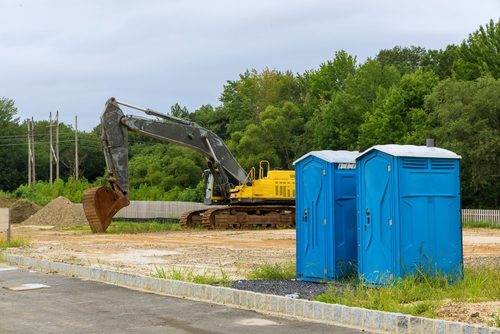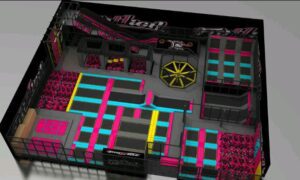Sanitation is often one of the least discussed aspects of construction site planning, yet it is one of the most essential. Workers may have access to safety gear, tools, and well-structured workflows, but without proper restroom facilities, the job site quickly becomes inefficient, unhygienic, and non-compliant with labor regulations. This is why construction toilet rental has become an integral part of planning and maintaining any modern construction project.
Whether managing a high-rise build, a residential development, or a remote infrastructure installation, ensuring access to clean, well-maintained toilet facilities isn’t just about comfort—it’s about responsibility. This article explores the importance of sanitation on job sites, the different types of toilets available for construction use, and how to choose the right rental service to match your project’s needs.
Why Sanitation Matters on Construction Sites
Construction work is physically demanding, often taking place outdoors in hot sun, cold rain, or wind. Teams work long hours, frequently far from any permanent restroom facilities. In such environments, basic human needs must be addressed with thoughtful solutions.
Neglecting proper sanitation leads to a number of issues, including:
- Decreased productivity as workers leave the site to find restrooms
- Increased health risks due to unsanitary conditions
- Lower employee morale and job satisfaction
- Violations of occupational safety regulations
- Damage to a company’s reputation or legal standing
A dependable construction toilet rental plan helps eliminate these risks while keeping operations running smoothly. It creates a clean, safe, and efficient work environment that benefits everyone involved.
Meeting Health and Safety Regulations
Health and labor agencies around the world enforce strict rules about sanitation in the workplace, including construction sites. These regulations often specify:
- Minimum number of toilets per number of workers
- Requirements for hand-washing facilities
- Standards for accessibility (e.g., ADA-compliant units)
- Maintenance schedules to ensure cleanliness
Failure to comply can lead to fines, work stoppages, and even legal action. But beyond avoiding penalties, complying with sanitation standards demonstrates that a company cares about the well-being of its workforce.
This is where construction toilet rental services step in to ensure compliance and provide documentation that proper facilities are in place and maintained regularly.
Types of Toilets for Construction Projects
There are multiple types of portable toilets designed specifically for job sites. The kind you choose depends on the size, scope, and duration of your project.
Standard Construction Units
These are durable, single-occupant units designed to handle heavy use. They often include a non-flush toilet, urinal, and hand sanitizer dispenser. Built with rugged materials, they’re made to withstand harsh environments.
Flushing Toilets
For more comfort and better hygiene, flushing portable toilets offer a foot-pump flushing mechanism. These units are ideal for longer-term projects or where clients and inspectors frequently visit the site.
High-Capacity Toilets
If your workforce is large, high-capacity units reduce the need for frequent waste removal and restocking.
ADA-Compliant Units
Accessible toilets are legally required on many job sites. These provide more space, ground-level entry, and handrails to accommodate workers with disabilities.
Portable Restroom Trailers
When privacy, comfort, or extended use is a priority, restroom trailers provide a higher-end solution. They can include multiple stalls, running water, lighting, air conditioning, and even music.
Each of these units serves a unique purpose, and the right construction toilet rental company can help you match your site’s needs with the correct equipment.
How to Determine Quantity and Placement
Determining how many toilets your site needs—and where to place them—is a logistical decision that requires careful thought. A good rule of thumb is one toilet per 10 workers for a 40-hour workweek. However, the number should increase if:
- The site operates more than 8 hours a day
- Work is physically intensive, increasing restroom frequency
- Alcohol is present (at events or during crew celebrations)
- Female workers are on-site, requiring gender-specific units
- Accessibility needs exist
Toilets should be strategically placed to allow easy access from multiple zones of the site, but also far enough from break areas or food preparation zones. Easy access for servicing trucks is also critical for ongoing maintenance.
Proper placement ensures workers stay close to their tasks without wasting time navigating the site just to use the restroom.
Maintenance and Hygiene Standards
Even the most well-planned toilet placement won’t matter if units are not properly maintained. This is where a professional construction toilet rental provider proves essential. A good rental partner will offer:
- Scheduled cleaning services (often weekly or bi-weekly)
- Waste removal and tank pumping using certified disposal methods
- Restocking of supplies such as toilet paper, soap, and hand sanitizer
- Odor control and deep cleaning
- Emergency response in case of overflow or malfunction
Workers should never have to worry about the cleanliness of the toilets they use. In fact, well-maintained units can have a positive effect on morale and encourage better overall hygiene practices on-site.
How to Choose a Reliable Rental Provider
Not all toilet rental companies specialize in construction. It’s essential to choose a partner that understands the unique challenges and requirements of a construction environment. Here are a few key factors to consider:
Industry Experience
Does the company regularly work with construction crews, contractors, or developers? Experience matters when it comes to understanding the fast pace and changing nature of job sites.
Flexible Rental Terms
Projects change all the time. Your rental provider should offer flexibility in case you need more units, longer rental periods, or faster servicing.
Transparent Pricing
Avoid surprises. Choose a company that gives you a full breakdown of costs—delivery, servicing, removal, and optional add-ons.
Regulatory Knowledge
A provider with deep knowledge of sanitation regulations can help ensure your site remains compliant at all times.
Emergency Support
What happens if a toilet is tipped over, vandalized, or breaks down? A responsive company will have support on call to address issues quickly.
When you choose the right construction toilet rental service, you’re not just renting equipment—you’re partnering with a team that helps keep your project running smoothly.
Portable Toilets and Sustainability
Modern sanitation doesn’t have to come at the cost of environmental responsibility. In fact, many companies are now offering eco-friendly construction toilet rental services that include:
- Low-water or waterless toilet systems
- Biodegradable chemicals for odor control
- Efficient waste disposal that meets or exceeds environmental standards
- Handwashing stations with foot-pump faucets to reduce water usage
These sustainable practices not only help the environment but also promote a cleaner, greener image for your business. Clients and stakeholders are increasingly interested in environmental stewardship—something as simple as the kind of toilet you provide can reflect positively on your company values.
Common Mistakes to Avoid
Even experienced site managers can make sanitation mistakes that cause headaches down the line. Avoid these common issues:
- Underestimating the number of units needed, leading to overuse
- Ignoring maintenance schedules, resulting in unsanitary conditions
- Placing toilets in inaccessible or unsafe locations
- Failing to accommodate workers with disabilities
- Not providing handwashing stations, especially during food breaks
Plan sanitation with the same care as materials or labor scheduling. It’s not just about compliance—it’s about keeping your crew safe, happy, and productive.
Final Thoughts: Sanitation Is Not Optional
It’s easy to overlook restroom facilities when you’re deep in planning blueprints, hiring subcontractors, and managing permits. But if you want your project to stay on schedule and under budget, sanitation should be part of your early site setup—right alongside power, fencing, and materials.
By choosing a reliable construction toilet rental service, you’re ensuring that your workforce can focus on what they do best: building. Clean, well-maintained facilities are a sign of a professional operation, and they send a message to everyone on-site that you take their health and comfort seriously.
If you’re planning a new construction project, consider portable sanitation early. It’s one of the smallest line items in your budget—but one with the biggest impact on performance, compliance, and employee satisfaction.





























